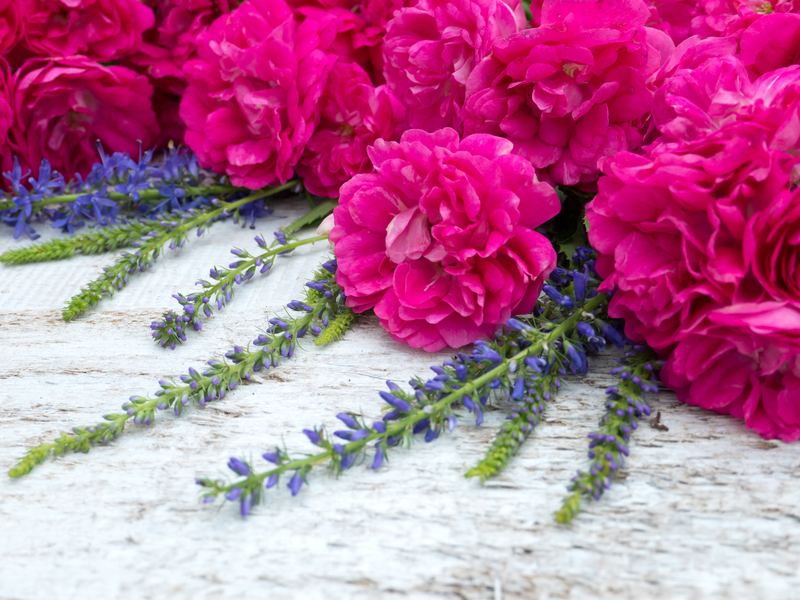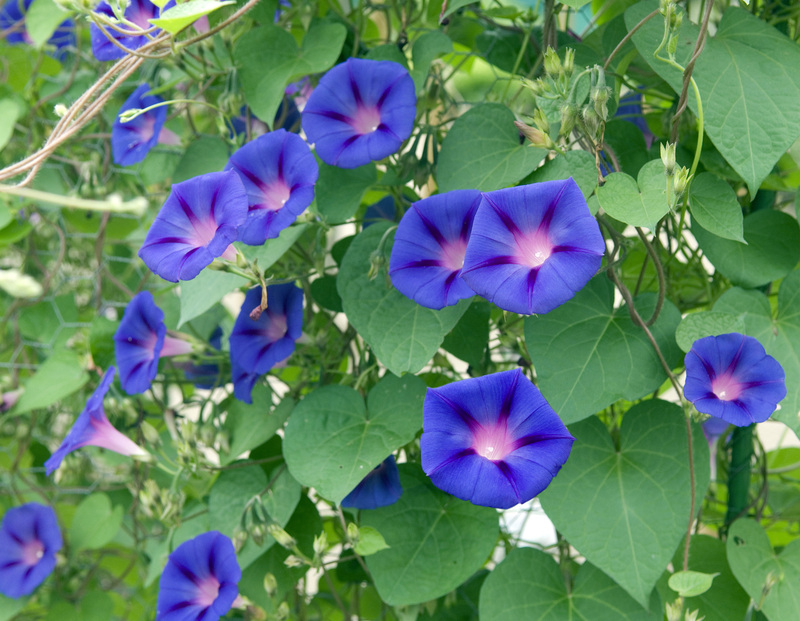Step-by-Step Instructions for a Bountiful Herb Garden
Posted on 02/06/2025
Step-by-Step Instructions for a Bountiful Herb Garden
Are you eager to cultivate your very own abundant herb garden? Whether you're a seasoned gardener or a beginner, creating a flourishing herb garden is a rewarding project that brings fresh flavors and aromas into your kitchen while enhancing your outdoor space. In this detailed guide, we'll walk you through each stage of setting up a productive herb garden, sharing practical tips and advice to ensure a healthy, bountiful harvest year-round.

Why Grow an Herb Garden?
An herb garden is more than just a patch of green in your yard; it's a valuable source of delicious, nutritious, and aromatic culinary ingredients right at your fingertips. Growing herbs at home also saves money, reduces food waste, and allows you to enjoy the therapeutic benefits of gardening. Additionally, many herbs attract pollinators and repel pests, offering natural solutions for organic gardeners.
Popular Herbs to Grow
- Basil - Excellent for pesto and Italian dishes.
- Mint - Perfect for teas, desserts, and cocktails.
- Parsley - A versatile garnish and salad ingredient.
- Rosemary - Great for roasting and savory recipes.
- Thyme - Adds depth to soups, stews, and meats.
- Cilantro - Vital for Mexican and Asian cuisines.
- Dill - Ideal for pickling and dressings.
- Chives - A mild onion flavor for baked potatoes and salads.
Step 1: Choose the Perfect Location
The success of your herb garden starts with selecting the right location. Most herbs thrive in full sun and require at least 6-8 hours of direct sunlight daily. Pick a spot in your yard, on your balcony, or even a windowsill that receives plenty of light.
- Soil Drainage: Herbs require well-drained soil. Avoid areas where water tends to pool.
- Accessibility: Plant herbs close to your kitchen for easy harvest and regular use.
- Protection: Some herbs benefit from shelter against strong winds.
Can You Grow Herbs Indoors?
Absolutely! Many herbs are well-suited to containers and can flourish indoors given plenty of light. If you lack outdoor space, consider placing pots on sunny windowsills or using grow lights to simulate sunlight for a lush indoor herb garden.
Step 2: Plan Your Herb Garden Layout
Before planting, consider your herb garden design. Mapping out the layout helps to maximize space, light, and access.
- Raised Beds: Offer great drainage and are easy to maintain.
- In-Ground Plots: Suitable for larger spaces.
- Container Gardening: Allows flexibility; pots can be moved as needed.
- Vertical Gardens: Ideal for small spaces; use wall planters or tiered shelves.
Grouping and Spacing Herbs
Group herbs with similar requirements together. For instance, Mediterranean herbs (like rosemary, thyme, and sage) enjoy hot, dry conditions, while basil and cilantro prefer more moisture. Be mindful of spacing - overcrowding leads to poor air circulation and can cause disease.
Step 3: Prepare the Soil
High-quality soil is essential for a thriving herb garden. Most herbs prefer light, loamy soil that is rich in organic matter.
- Test the Soil: Aim for a pH between 6.0 and 7.5. Soil test kits are readily available at garden centers.
- Add Compost: Mix in well-rotted compost or organic matter for improved drainage and nutrients.
- Avoid Heavy Fertilizers: Too much fertilizer can affect the flavor of herbs; organic compost is sufficient for most varieties.
Container Gardening Tips
If you are growing herbs in pots, ensure each container has drainage holes. Use a high-quality potting mix with added perlite or sand to facilitate drainage and prevent root rot.
Step 4: Select Your Herbs
Consider which herbs you use most in cooking or those that have medicinal or ornamental value. For a plentiful herb garden, include a mix of annuals (like basil and cilantro) and perennials (such as rosemary and thyme).
- Annual Herbs: Basil, cilantro, dill, and parsley (biennial but treated as annual).
- Perennial Herbs: Rosemary, thyme, oregano, chives, mint, sage.
- Starter Plants vs. Seeds: Beginners may find it easier to start with nursery plants, while seeds offer more variety and cost savings.
Companion Planting in Herb Gardens
Companion planting is the practice of growing herbs together that benefit each other. For example, basil helps repel pests from tomatoes, while chives can deter aphids from roses.
Step 5: Plant Your Herb Garden
It's finally time to get your hands dirty! Follow these best practices for planting your bountiful herb garden:
- Follow Seed/Plant Spacing: Check seed packets or plant tags for recommended spacing and depth.
- Water Gently: After planting, gently water the soil to settle roots without washing them out.
- Mulch: Apply a thin layer of organic mulch to retain moisture, suppress weeds, and maintain soil temperature.
- Label Your Plants: Use markers to avoid mixing up similar-looking herbs, especially at seedling stage.
Direct Sowing vs. Transplanting
Some herbs grow well when sown directly in the garden (like dill and cilantro). Others, such as basil and parsley, often benefit from being started indoors and transplanted once temperatures warm up.
Step 6: Water and Fertilize Wisely
Proper watering is crucial for herb success. Most herbs favor soil that's moist but not soggy.
- Water at the Base: Direct water to the soil rather than leaves to reduce disease risk.
- Morning Watering: Water early in the day so leaves can dry before nighttime.
- Check Soil Moisture: Stick your finger an inch into the soil; water if it feels dry.
- Light Feeding: Use a diluted, balanced organic fertilizer once a month during the growing season.
Signs of Over- or Under-Watering
Yellowing leaves may indicate too much water, while wilted, drooping plants could signal the need for more frequent watering. Herbs in containers typically require more attention than those planted in beds.
Step 7: Prune and Harvest Regularly
To encourage bushy growth and a plentiful herb harvest, prune your plants often. Pinch back tips, remove flower buds, and never harvest more than one-third of a plant at any time. Regular harvesting delays flowering, which helps maintain leaf production.
- Basil: Pinch leaves from the top just above a pair of leaves.
- Mint & Oregano: Cut stems back to encourage branching.
- Chives: Snip leaves close to the ground; regrowth will be rapid.
- Parsley & Cilantro: Harvest outer leaves first.
What to Do When Herbs Flower
Some herbs, such as basil, lose flavor when they flower (bolt). Regularly remove flower buds to prolong harvest. For herbs grown for seeds (like dill and coriander), allow them to flower and set seed as desired.
Step 8: Protect Your Herb Garden Naturally
Healthy herbs are generally less prone to pests, but it's wise to keep a close eye out for problems. Practice organic gardening methods to keep your herbs safe and delicious.
- Handpick Pests: Remove caterpillars and beetles by hand.
- Encourage Beneficial Insects: Ladybugs and lacewings eat aphids and other common pests.
- Natural Sprays: Use soap sprays or neem oil as a last resort.
- Good Air Circulation: Space plants properly and remove dead foliage promptly.
How to Prevent Herb Diseases
Water in the morning, avoid overhead watering, and space plants for airflow to prevent mildew and fungal issues. Clean up plant debris, especially in fall, to interrupt the lifecycle of disease pathogens.
Step 9: Enjoy and Preserve Your Bountiful Harvest
With diligent care, your herb garden will yield flavorful, aromatic leaves for use in recipes, teas, and natural remedies. To make the most of your herb harvest, try these preservation methods:
- Drying: Tie herb bundles and hang upside down in a cool, dry place. Store dried herbs in airtight containers.
- Freezing: Chop and freeze herbs in ice cube trays with water or oil for instant flavor boosts.
- Herb Vinegars: Infuse vinegar for salad dressings and marinades.
- Pesto & Chimichurri: Blend tender herbs with oil and garlic for fresh sauces.
Prolonging the Harvest
Many herbs can be grown indoors in winter for year-round harvesting. Move pots inside before the first frost and place them in sunny windows or under grow lights to keep them producing.
Tips for a Thriving Herb Garden All Season Long
- Rotate Crops: Change planting locations each year to avoid soil-borne pests.
- Watch the Weather: Protect tender herbs from frost or extreme heat with cloches or shade cloth.
- Stay Vigilant: Check your herbs regularly for signs of pests or disease so you can address issues early.
By following these step-by-step instructions for a bountiful herb garden, you'll enjoy a lush, productive patch of flavor-packed, health-boosting herbs at your doorstep. Whether in containers, raised beds, or a simple windowsill pot, your herb garden will reward you with freshness, utility, and beauty all season long. Happy gardening!

Frequently Asked Questions About Herb Gardens
What is the easiest herb to grow?
Basil and mint are among the easiest herbs for beginners, thriving with minimal care under the right conditions.
When should I plant herbs?
Most herbs can be planted in spring after the danger of frost has passed. Some, like cilantro and parsley, tolerate cooler temperatures and can be sown earlier or in the fall.
How often should I water my herb garden?
Water when the top inch of soil is dry, generally 1-2 times per week. Adjust based on rainfall, temperature, and plant size.
Can I mix herbs together in the same pot?
Yes, but group herbs with similar water and light requirements. For example, thyme and rosemary both prefer dry conditions, while basil and parsley like more moisture.
How do I keep my herb garden productive?
Frequent harvesting, good soil, and proper watering are key. Remove flowers and dead leaves regularly for ongoing production.
Conclusion
Starting a bountiful herb garden is simpler than you might think. By carefully choosing the right location, nurturing soil, selecting herbs that suit your cooking and garden space, and applying regular care, you will enjoy a thriving garden filled with fresh, aromatic herbs. Whether you dream of a full backyard plot or a compact indoor herb haven, these step-by-step instructions provide the foundation for a lush, productive, and satisfying herb gardening experience.
Happy planting and may your herb garden flourish!

